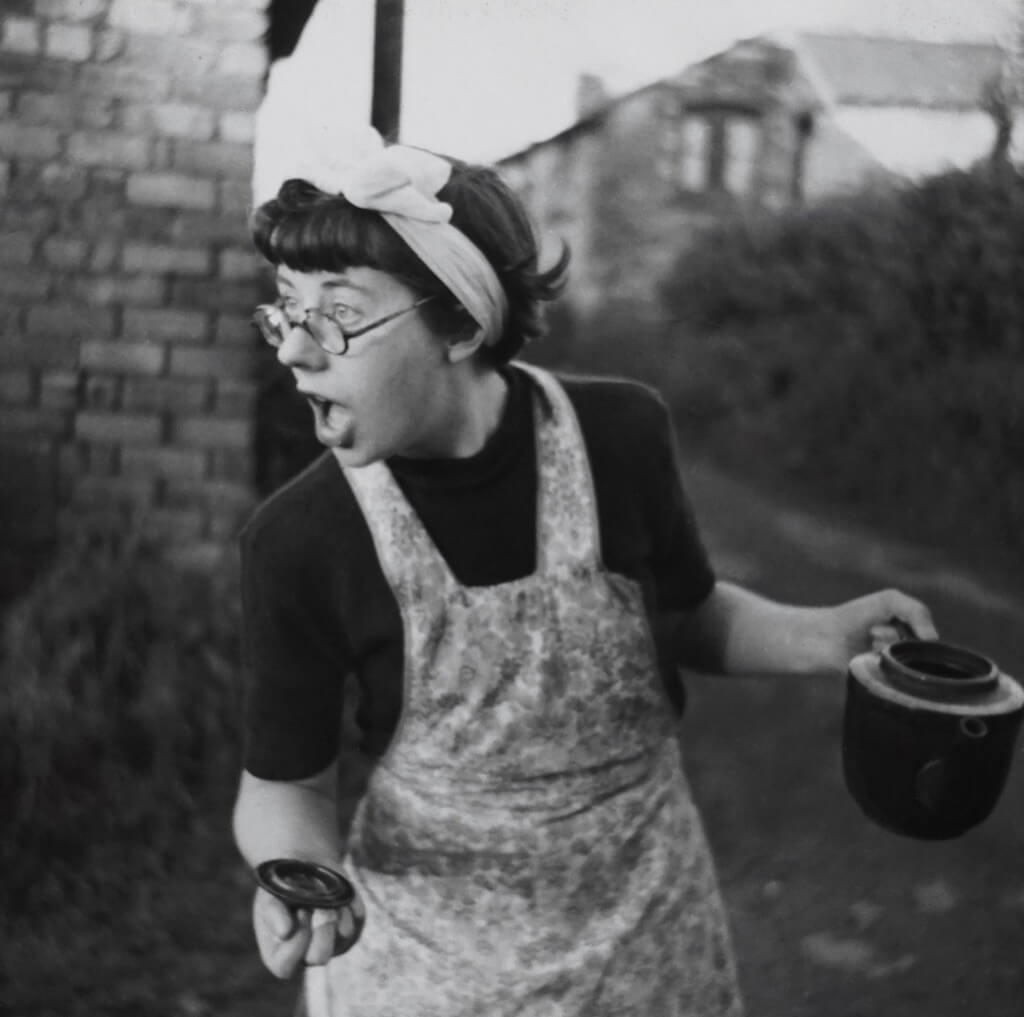In the annals of true crime, there are cases that leave us baffled and intrigued.…
Surviving an Unlikely Coffin Confinement
- by Mamparra

Imagine waking up to find yourself in the darkest, most confining space imaginable – a coffin. While it sounds like a scene straight out of a horror movie, being buried alive, though extremely rare, has occurred throughout history. Today, let’s explore the daunting question: how does one survive if trapped in such a predicament?
The initial and most crucial step is to remain calm. Panicking can lead to hyperventilation, rapidly depleting your already limited oxygen supply. Typically, a person has about an hour or two of breathable air in a coffin. Therefore, conserving air is key. Taking deep breaths, then holding them as long as possible before exhaling, is vital to prolonging your survival. Avoid actions that consume more oxygen, such as yelling or hyperventilating.
Next, assess your environment. While the likelihood of being buried with useful items is low, it’s worth checking for anything that could aid in your escape. This might include a belt buckle or even, in incredibly rare circumstances, a cell phone. If you have a phone, try calling for help, even if you believe there’s no signal – emergency numbers often connect via any available cell tower.
If tools for escape are not available, your next best bet is to signal for help. Morse code, an internationally recognized distress signal, can be your lifeline. Tap “SOS” (three quick taps, three long taps, three quick taps) on the coffin lid. The odds of being heard are slim, but it’s a chance worth taking.
The available air in a coffin depends on several factors, including its size and your size. Some theories suggest a healthy adult might have up to five and a half hours of breathable air. Taking slow, deliberate breaths can help maximize this time.
If signaling for help fails, you might consider a more physical escape. This involves breaking through the coffin lid. The material of the coffin plays a crucial role here – while a wooden “pine box” might give way, a metal-clad or hardwood coffin will be nearly impossible to pierce. Using whatever you have at hand, start attacking the lid. Protecting your face with clothing can help avoid immediate suffocation from the incoming dirt.

Nuclear power is a significant source of energy, providing a substantial portion of the world’s…

Contrary to popular belief, goldfish have a significantly better memory than often assumed. This common…
Climbing Out of the Grave
Assuming you’ve managed to break the coffin lid, the next challenge is to climb out of the grave. Light, dry soil is easier to navigate through than wet, compacted soil. If you’re fortunate to have been buried in shallow soil or during dry weather, you may be able to dig your way out. However, the deeper the burial, the more difficult this will be.
Facing the Stark Reality
It’s important to confront the harsh reality – survival in such a situation is highly unlikely. Historic cases of survival typically involve external intervention, such as someone on the surface hearing distress signals or mistakenly entombed individuals being discovered just in time.
In survival situations, particularly extreme ones like being buried alive, mental resilience becomes a crucial factor. The ability to remain calm in high-stress scenarios can significantly impact your chances of survival. This mental fortitude isn’t innate; it’s developed through consistent practice of mindfulness and stress management techniques. Techniques such as deep breathing, visualization, and even rehearsing mentally for various survival scenarios can enhance one’s ability to remain composed. This calmness not only conserves energy and oxygen but also facilitates clearer thinking, allowing for more effective problem-solving under pressure.
Historical Context and Precautions
The fear of being buried alive, a phenomenon known as taphophobia, was particularly prevalent in the 18th and 19th centuries. This fear gave rise to the invention of safety coffins. These coffins were equipped with mechanisms such as bells, flags, or tubes for air and communication. The idea was to provide the “deceased” with a means to signal to the outside world in case they were mistakenly buried alive. This innovation reflects the historical anxieties about premature burial and the ingenuity of past societies in addressing such fears.
In some European countries, waiting mortuaries were established as a solution to the fear of premature burial. Here, bodies were kept under observation until there were undeniable signs of decomposition, which is a definitive indicator of death. These facilities were often staffed with attendants who monitored the bodies for any signs of life. The use of waiting mortuaries underscores the lengths to which societies have gone to prevent the horror of burying someone alive.
Technological and Medical Considerations
With the advancement of medical science and technology, the misdiagnosis of death has become exceedingly rare. Modern medical equipment and techniques such as electrocardiograms (ECGs), EEGs, and other biometric monitoring tools provide accurate readings of vital signs, ensuring that the declaration of death is made with certainty. This progression in medical technology has significantly reduced the already rare occurrences of premature burial.
Theoretically, wearing biometric devices that constantly monitor vital signs like heart rate, oxygen saturation, and respiratory rate could provide an additional safety net. In the unlikely event of a person being mistakenly declared dead, these devices could alert medical professionals or authorities, preventing a premature burial.
Survival Strategies
When trapped in a confined space like a coffin, conserving energy is as crucial as conserving oxygen. Any unnecessary movement can expend precious energy and oxygen, reducing the time available for survival. Staying still and maintaining a calm mental state can prolong the time before critical resources run out.
In a situation where dirt starts filling the coffin, using clothing to create air pockets or to filter the air can be a life-saving maneuver. A jacket or a shirt can be used to cover the face, preventing the inhalation of dirt and providing a small reservoir of breathable air.
Small devices capable of producing sound, like a watch with an alarm, can be invaluable. In the slim chance that rescuers are nearby, these audio signals can lead them to your location. Periodic activation of such devices could be the difference between being found or remaining undiscovered.
Unusual Situations
Knowledge of coffin construction can play a role in survival strategies. Older coffins, especially those made from weaker materials, might be easier to break through compared to modern, sturdier designs. Understanding the material and build of the coffin can inform the approach to escaping it.
The type of soil and the depth at which one is buried greatly influence the feasibility of escape. Looser, sandier soils are easier to displace compared to dense, heavy clay. The shallower the burial, the higher the chance of successfully digging oneself out, although this remains an immensely challenging endeavor.
Staying calm under such extreme stress is fundamental, aided by mindfulness and breathing techniques. Historical solutions like safety coffins and waiting mortuaries reflect past fears and responses to this issue. Modern medical advancements now make such incidents exceedingly rare. However, understanding the nuances of coffin construction, soil types, and the value of using available resources, like clothing for air filtration or creating audio signals, can provide crucial strategies for such an improbable yet terrifying situation.
Imagine waking up to find yourself in the darkest, most confining space imaginable – a coffin. While it sounds like a scene straight out of a horror movie, being buried alive, though extremely rare, has occurred throughout history. Today, let’s explore the daunting question: how does one survive if trapped in such a predicament? The…
Recent Mamparras
- Zwai Bala – The Musical Pioneer Who Helped Shape South Africa’s Sound
- Is This the Worst Own Goal Ever? Watch and Decide
- Mamparras Spend R7.7 Billion From 25th to the 31st of December 2024
- Why Do Liberals Think Trump Supporters Are Mamparas?
- Indepth Look at the Online Thrill to Grill Casino Game
- Artist Discovers 2000yo Roman Bust at Texas Goodwill for $34
- Nobuntu (Mamparra-nobs) Mkhize Disrupts FlySafair Flight – Gets Arrested
- Oscar Pistorius Walks Free, But Where is Reeva’s Justice?
- The Accidental Aboriginal’s Legacy
- The Origins of Oktoberfest
- Fascinating Quick Facts

